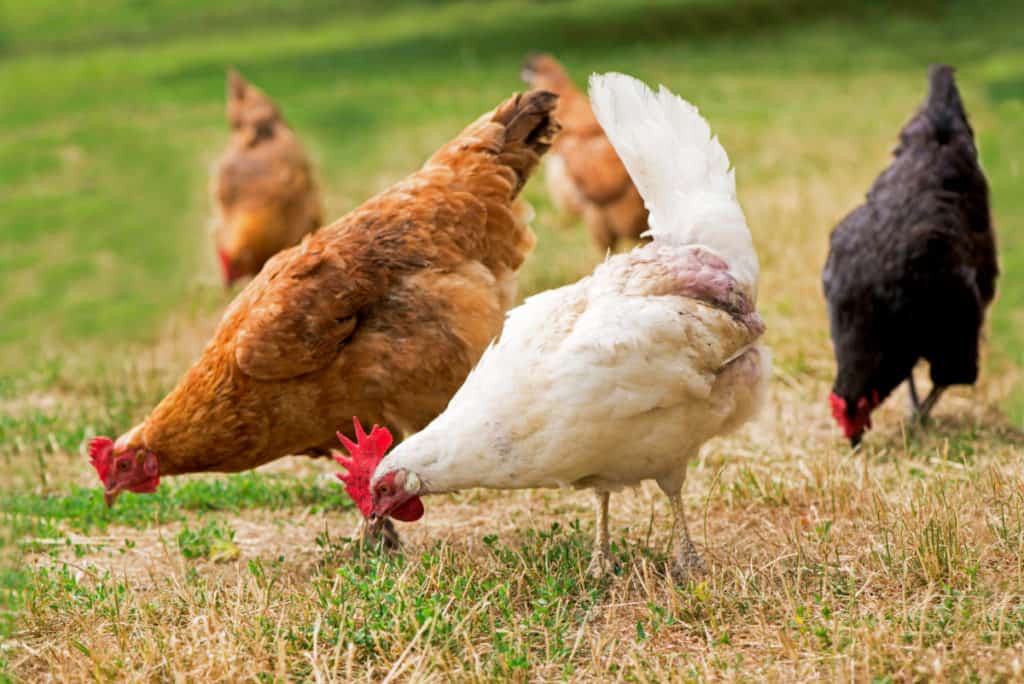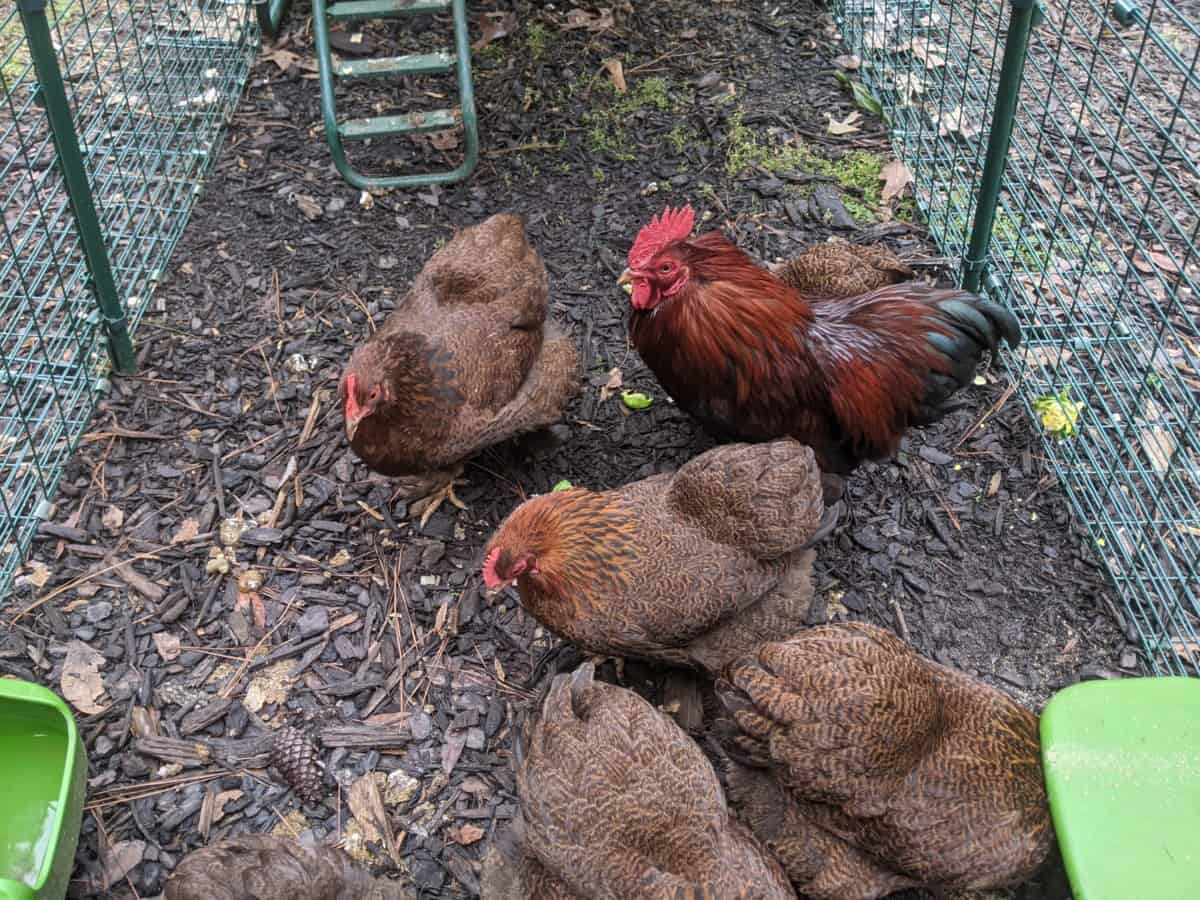Chickens are governed by a strict social hierarchy or pecking order that maintains peace in the flock. Introducing new chickens upsets the order and causes chickens to act out and squabble amongst each other to establish a new order.
More aggressive chickens may bully smaller, younger ones and can badly injure them or keep them from feeding or drinking.
One must carefully and gradually introduce new chickens to an existing flock. After a quarantine period, the new birds should be put in a crate alongside the coop so that the chickens can see and smell each other. After a week, they should be allowed to free-range together or meet in a large run with plenty of space.
There are certain things to keep in mind when you introduce new hens to your backyard flock. How you introduce them largely depends on whether your chickens live in a run or are free-range.
It is important to monitor your birds closely for the first few weeks to ensure no serious injuries occur and that the new chickens adjust well to their new surroundings.

Be Prepared for New Chickens
Backyard chicken enthusiasts all know that familiar urge that hits us, usually around springtime – to get new chickens. We impulsively order “just a few” more birds without thinking about the commitment it will take to safely introduce the newbies to the existing flock.
Realize that transitioning the new birds into your current flock will take preparation, time, and effort on your part. You will need the following:
- A separate coop or a crate big enough to keep them in quarantine for a few weeks.
- Extra waterers and feeders. Existing chickens may guard access to food and water, so more options will ensure the newcomers have access.
Be Cautious Introducing New Chickens to Your Flock
When you get new chickens, it is best to manage the new birds separately from your established flock for the first while. This quarantine period is important for two reasons:
- It prevents illnesses or pests from spreading between the groups of birds. The existing flock may have developed immunity to local strains of diseases, so you need to protect the newbies and give them time to adjust to their new environment. The new birds may also carry diseases or pests to your old flock. Wash your hands between working with each flock to prevent cross-contamination.
- Separation for the first while prevents any violence between the mature birds and the new ones. Chickens have a social pecking order, and adding new birds to the flock disrupts it. They need to be introduced slowly, and it will take time to establish their place in the social hierarchy.
Some breeds of chicken, like Buff Orpington, are very easy-going and quickly welcome new flock mates. In contrast, Rhode Island Reds and Silkies are more territorial and are not fond of newcomers.
You should expect some unrest in your flock when you are in the process of integrating your flock. Keep an eye on their behavior, watching dominant hens particularly closely.
If one hen that is high up the pecking order attacks a new chicken, it can incite more hens to gang up on a newcomer. They can seriously injure or even kill them.

Adding New Hens to Your Free-Range Flock
If you buy newly hatched chicks, wait until they are 18 weeks old before introducing them to the rest of the flock. Small chicks will, unfortunately, get picked on, and a rooster may even kill them.
If you get new hens, first put them in a separate coop for a 30-day quarantine. During this time, observe them closely for any signs of mites, lice, scaley legs, fluid coming from their eyes, blocked nostrils, or a shriveled-up comb.
Supplement the new birds’ water and treat them with diatomaceous earth while they are in quarantine.
After this period of isolation, it is time to introduce the new birds to the rest of the flock! Start by keeping them in side-by-side coops for a week. The chickens will smell and see each other through the fence, allowing time for the hens to get used to each other.
If you keep your chickens free-range, let them forage together. Let the new flock out first, then let the existing flock out. After free-ranging together for the day, the newbies should follow the flock back into the coop in the evening.
For the next month to six weeks, keep an eye on the social dynamics, note personality clashes, and intervene if any of the chickens are being badly bullied.
How To Add New Chickens to a Cooped Flock
If you keep your chickens in a coop, you should also start by keeping the chickens in side-by-side coops for a week. Once they are used to each other, start by introducing hens of a similar size and characteristics. Give them a big run or area to get to know each other.
Let the chickens be in the same space for a few minutes and then separate them again. Do this every day for a few days. You should notice your old birds’ interest in the newcomers will fade. This is when you know you can move on to letting them share a coop.
Place the new birds in the coop at night. Put them onto the perches. When the chickens wake up in the morning, they should accept the new hen as one of their own.
Introducing a Rooster to Your Flock
Never introduce a rooster into an existing flock that already has a rooster. The roosters will fight and try to kill each other to establish dominance. If you want to introduce new blood to your flock, it is best to find a new home for the old rooster before getting a new one.
Conclusion
One should carefully introduce new chickens to your existing flock to keep the old birds and the new ones safe. Chickens have a strict social hierarchy, and disruptions can lead to violence and even death.
Quarantine new birds for at least a month and wait for chicks to reach 18 weeks of age before you introduce them to the rest of the flock. Gradually let the birds get used to each other. Keep the new birds in a coop or crate next to the main coop for a week or so.
Let the chickens forage together. This helps them bond and become part of the flock. Keep a close eye on them and watch out for bullying or fighting. Never introduce a second rooster into a flock.

